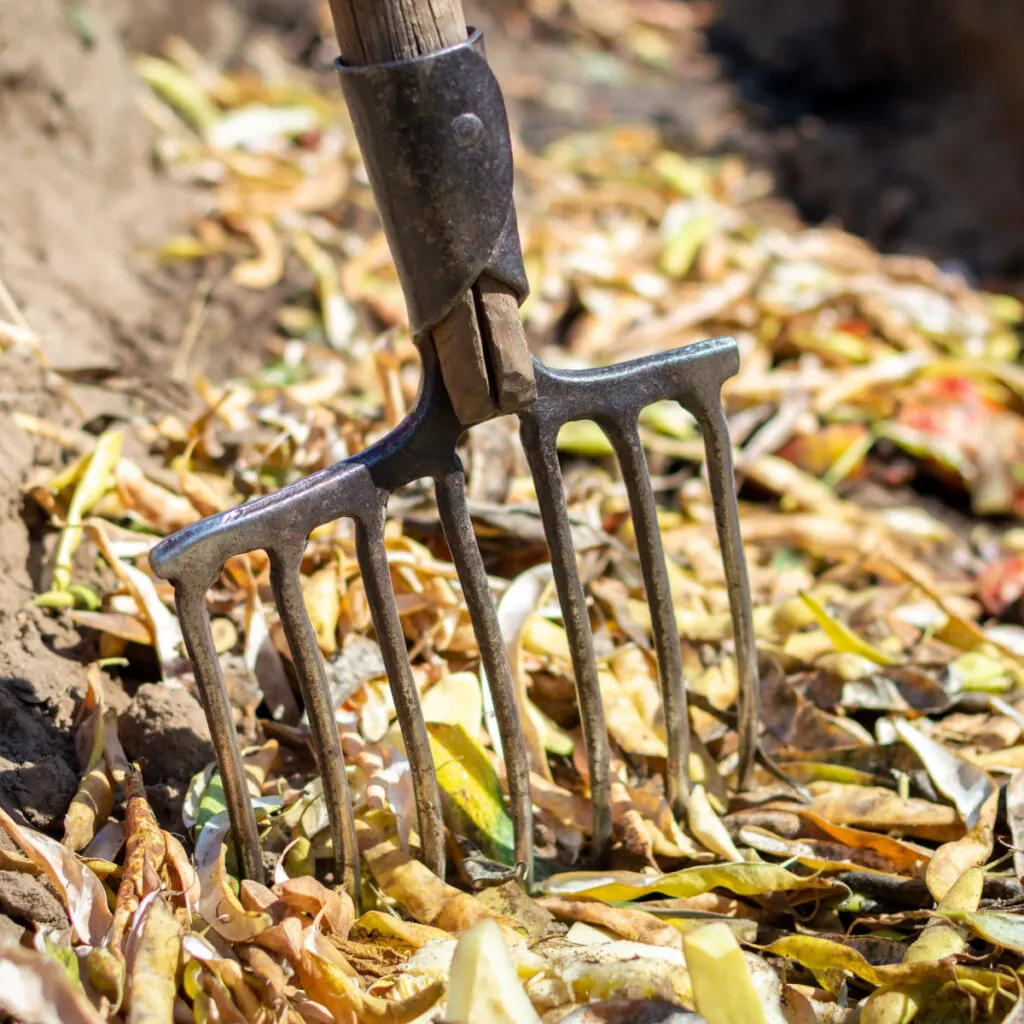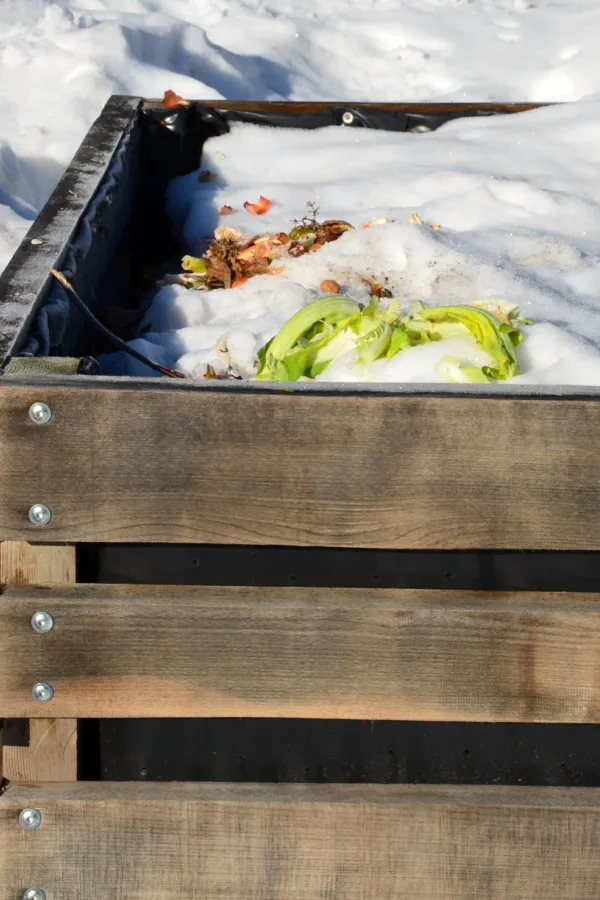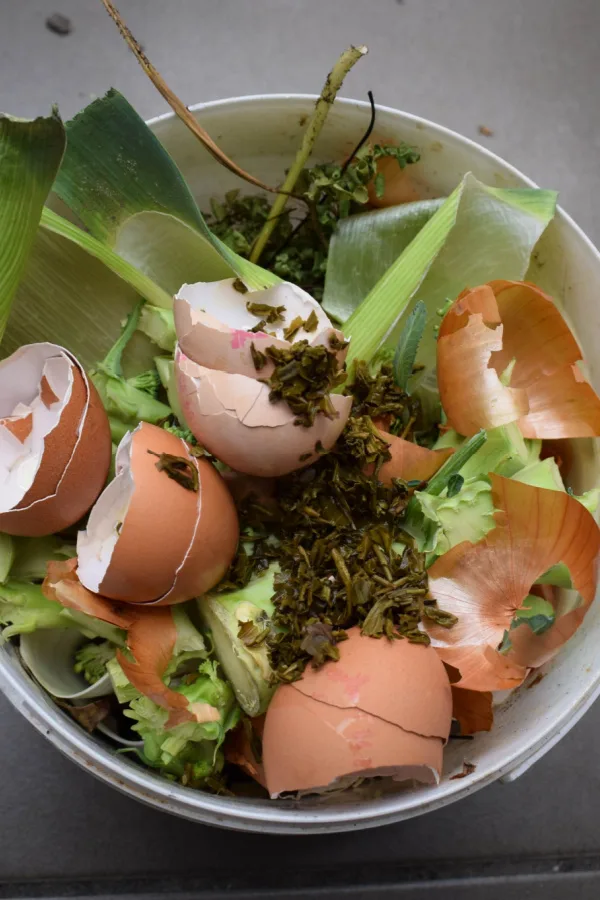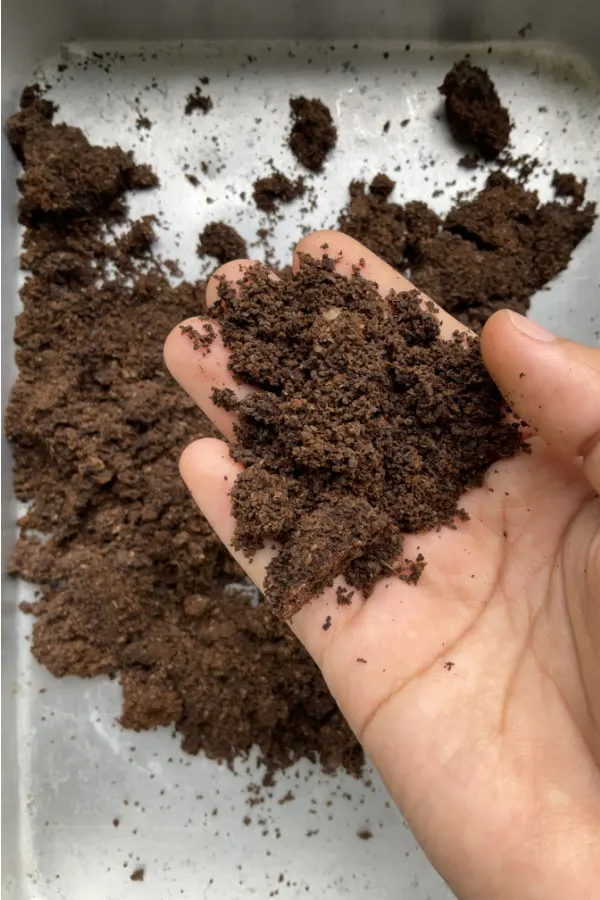Did you know that one of the best ways to compost all winter long is by using a simple process known as the trench method? In fact, not only is it easy to do – it also doesn’t require a compost pile to do it – which makes it great for someone without access to a compost bin to compost all year long!
Trench composting isn’t new. In fact, it has been a tried and true method of enriching and powering the soil dating back thousands of years. Instead of using a traditional compost pile or bin, compostable materials get buried directly into the soil.
Long ago, civilizations that grew their own food used it as a way to power crops. Along side of plants, they would simply dig trenches and fill them with food scraps, fish and other compostable materials. Then, as the materials broke down, they enriched the soil and helped give nutrients to their crops.

There is no need to add or mix in more ingredients later. Nor is their any worry about getting the right combination of materials together to heat up and break down fast. The scraps and other biodegradable materials simply get buried – and then begin to slowly break down under cover of the soil.
The trench method can be amazingly helpful in the winter for gardeners as a way to keep on composting – even long after their traditional compost piles have frozen over and stopped for the winter season.
Winter Composting – How To Use The Trench Method
Today, most avid gardeners use a dedicated compost pile instead of the trench method for composting. It allows materials to break down completely over time, giving them access to pure, rich finished compost.
There is little doubt that finished compost is ideal for adding to planting holes, potting soil – and even making powerful compost fertilizer tea. See: How To Make Homemade Compost Tea – Power Your Plants Naturally!
But for a large majority of areas, it can be hard to compost once the cold and freezing temperatures of winter settle in. As the frigid temperatures arrive, decomposition slows down or even stops in some cases. Piles can also become frozen, covered with snow, or overloaded due to materials not breaking down.

Not only can open materials on top attract mice, raccoon and other animals, they can also often begin to smell if materials don’t break down and the temperature suddenly warms up.
Unfortunately, this causes many gardeners to stop composting in the winter altogether. Instead of using all of those valuable vegetable peels, scraps, coffee grounds and more, they simply throw them out. But this is exactly where trench composting can help!
How To Trench Compost
So how does trench composting work in the winter? Well, it all depends on how severe your winters are and how often and how long your ground stays frozen. But no matter where you live, trench composting can work for you. In some case with brutal winters, you just need to prepare ahead a bit.
Trench Composting In Warmer Winter Climates
If you live in an area with warm or moderate winters, digging through unfrozen soil is fairly easy. Although cooler winter temperatures might be chilly enough to slow a regular compost pile, it won’t affect trench composting at all. And by burying the materials, there is no worry of smell or odor.
Start by selecting an unused area of your garden and dig a hole about 10 to 12 inches deep. Next, place your scraps directly in the hole. Allow enough room at the top for at least 4 inches of soil to cover the hole.

By burying to that depth, the soil stays warmer and helps to break down the materials faster. But even more importantly, it’s also deep enough that rodents and other animals won’t dig it back up. Beyond the garden, you can also trench compost in flowerbeds or around bushes and shrubs.
Burying scraps in flowerbeds near perennials and bushes provides nutrients slowly as the materials break down. Again – it’s so much better than simply throwing those valuable winter kitchen scraps away!
Cold Weather Trench Composting – How To Trench Compost In The Winter
So what if the ground freezes in your area often or for months at a time? There are actually two different ways to still practice trench composting in the winter.
If you happen to live in a climate with absolutely frigid temperatures, you can create a hole or several holes in the fall or early winter while the soil is still workable. Cover the holes with a board and then lift and drop materials in as needed.
Be sure to replace the cover after filling it and anchor it with a heavy object. The extremely cold temperatures will prevent the scraps from smelling, and the cover will keep unwanted pests from scrounging around. As soon as it warms enough to cover with a bit of soil, fill the hole and your trench compost pile will begin to break down.

You can also save compost materials in colder areas by keeping a 5-gallon bucket with a tight-fitting lid nearby outdoors. Fill the bucket with kitchen scraps, coffee grounds, and other compostable materials as they become available.
The good news is that when outside temperatures get that cold, the compost materials won’t cause any issues with smell or have any chance of rotting in the bucket.
They can simply be held until it warms enough to break through the soil and bury. It is far better than throwing on top of a cold compost pile and having animals rummaging through them. Or even worse, the pile starting to rot and smell when it warms up.
Trench Composting Beyond Winter Season
Whether or not you have a compost pile, you can also use the power of trench composting throughout the entire growing season. In fact, it is a great way to side-dress your plants to help power them with slow-release nutrients and minerals.
Egg shells, coffee grounds, and vegetable scraps are all perfect for trench composting using the side dress trenching method. Start by digging four to six inches away from the edge of the roots of your vegetable or flower plants.
Because the soil is warm, you don’t need to dig as deeply as you do in the winter. Once the materials are in the trench, simply cover up with soil and let the magic happen. As the materials break down, they provide extra nutrients to the plants slowly and naturally. To help the process work even faster, chop up the ingredients as finely as you can before adding.

Best Items For Side Dressing Trench Composting
This side dressing technique is perfect for coffee grounds and filters for tomato and pepper plants. These plants love nitrogen, and coffee grounds have plenty of it. Just dig a few inches down four to six inches away from the main stem and bury the filter and grounds together.
Almost all coffee filters are 100% biodegradable. And all of grounds and filter will add both nutrients and humus as they break down in the soil.
Another great side dressing ingredient is crushed egg shells. They are wonderful for trench composting around tomato and pepper plants. As the shells break down, they enrich the soil with calcium, a key mineral in stopping blossom end rot for both tomatoes and peppers. Here it is best to pulverize the egg shells into a fine powder to speed the release of their nutrients.
Vegetable scraps such as potato and carrot peels are another great choice. They break down quickly in the soil to provide extra nutrients and help add organic matter to the soil.
No matter your growing location or what you experience during the winter season, try trench composting and put those kitchen scraps to good use this year. Here’s to enjoying all the benefits of trench composting in the winter – or any time for that matter!
This Is My Garden
Follow Our Facebook Page For Great Gardening Tips And Advice! This Is My Garden Facebook Page
This Is My Garden is a garden website created by gardeners, for gardeners. Jim and Mary Competti have been writing gardening, DIY and recipe articles and books and speaking for over 15 years from their 46 acre Ohio farm. They publish three articles every week, 52 weeks a year. Sign up today to follow via email, or follow along!
